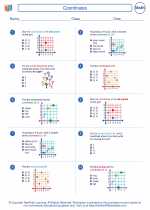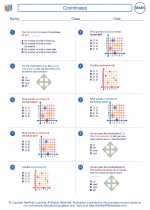Equations
An equation is a mathematical statement that shows that two expressions are equal. It typically contains one or more variables that represent unknown values. Solving an equation involves finding the value of the variable that makes the equation true.
Types of Equations
- Linear Equations: These equations have variables raised to the first power and can be represented on a graph as a straight line. The general form of a linear equation is ax + b = c.
- Quadratic Equations: These equations have variables raised to the second power and can be represented on a graph as a parabola. The general form of a quadratic equation is ax2 + bx + c = 0.
- Exponential Equations: These equations involve variables in the exponent position, such as ax = b.
- Trigonometric Equations: These equations involve trigonometric functions like sine, cosine, or tangent.
Solving Equations
To solve an equation, you perform operations to isolate the variable on one side of the equation. The goal is to find the value(s) of the variable that make the equation true.
Steps for Solving Equations
- Combine Like Terms: If the equation has like terms, combine them to simplify the expression.
- Use Inverse Operations: Use inverse operations (addition/ subtraction, multiplication/division) to isolate the variable on one side of the equation.
- Check Your Answer: After finding the value of the variable, substitute it back into the original equation to ensure it satisfies the equation.
Study Guide
Here are some key points to remember when studying equations:
- Understand the different types of equations and their general forms (linear, quadratic, exponential, trigonometric).
- Practice solving equations using the steps outlined above.
- Learn how to check your solutions to ensure they satisfy the original equation.
- Practice solving word problems that can be represented as equations.
- Review the properties of equality and how they apply to solving equations.
Remember, the key to mastering equations is practice and understanding the fundamental concepts. With enough practice, you'll become more comfortable solving a variety of equations.
[Equations] Related Worksheets and Study Guides:
.◂Math Worksheets and Study Guides Fourth Grade. Coordinates
Study Guide Coordinates
Coordinates  Worksheet/Answer key
Worksheet/Answer key Coordinates
Coordinates  Worksheet/Answer key
Worksheet/Answer key Coordinates
Coordinates  Worksheet/Answer key
Worksheet/Answer key Coordinates
Coordinates 

 Worksheet/Answer key
Worksheet/Answer key
 Worksheet/Answer key
Worksheet/Answer key
 Worksheet/Answer key
Worksheet/Answer key

The resources above cover the following skills:
Geometry (NCTM)
Specify locations and describe spatial relationships using coordinate geometry and other representational systems.
Describe location and movement using common language and geometric vocabulary.
Make and use coordinate systems to specify locations and to describe paths.